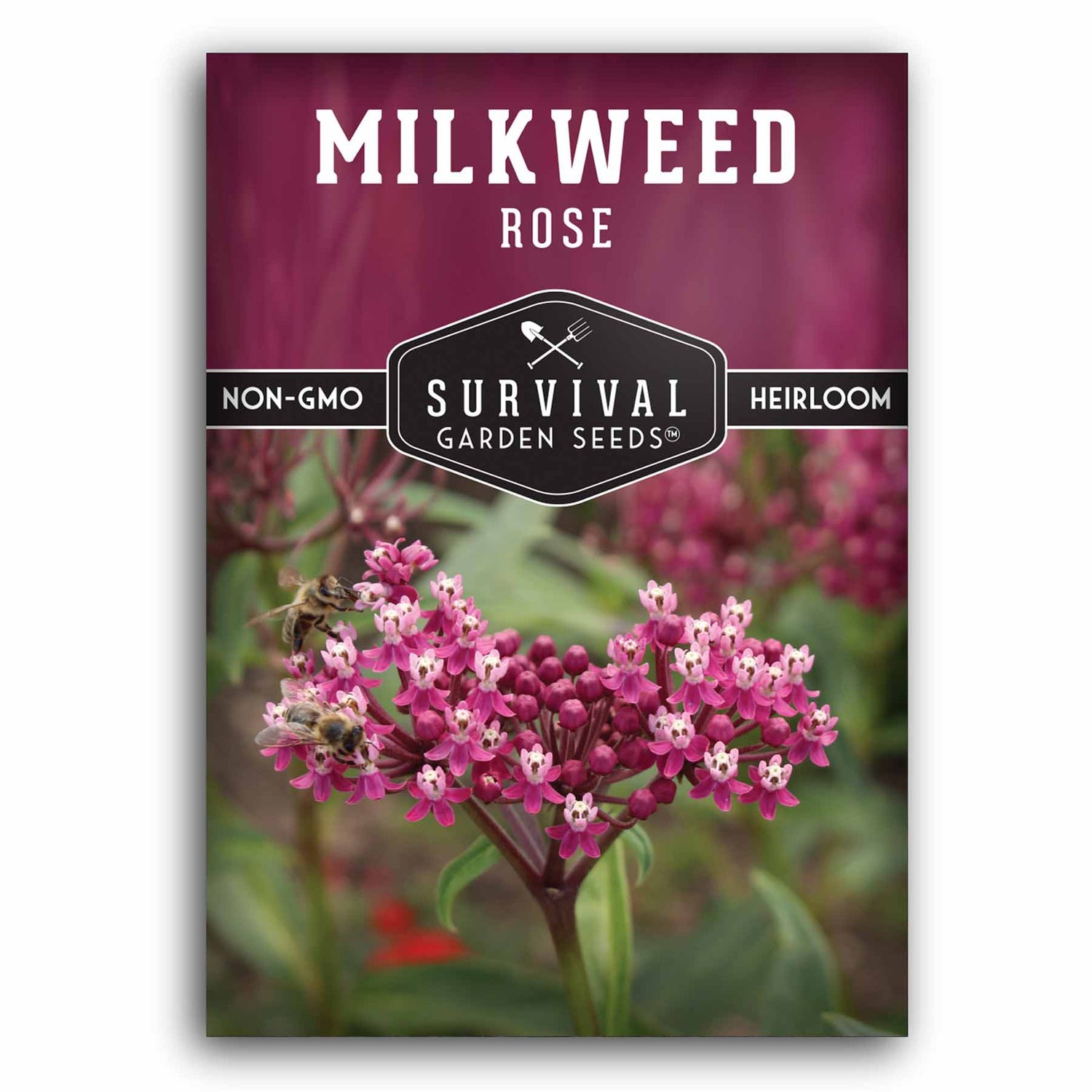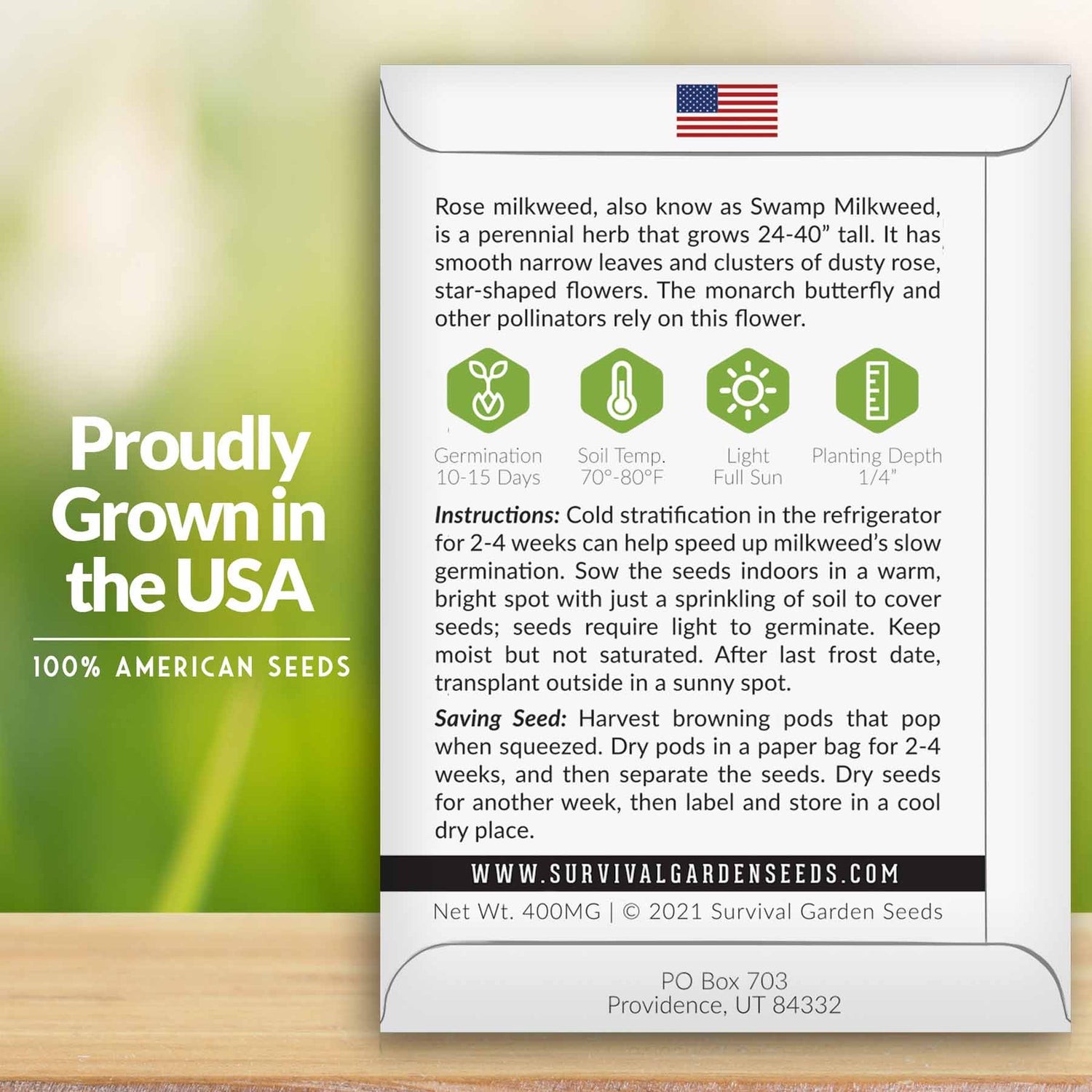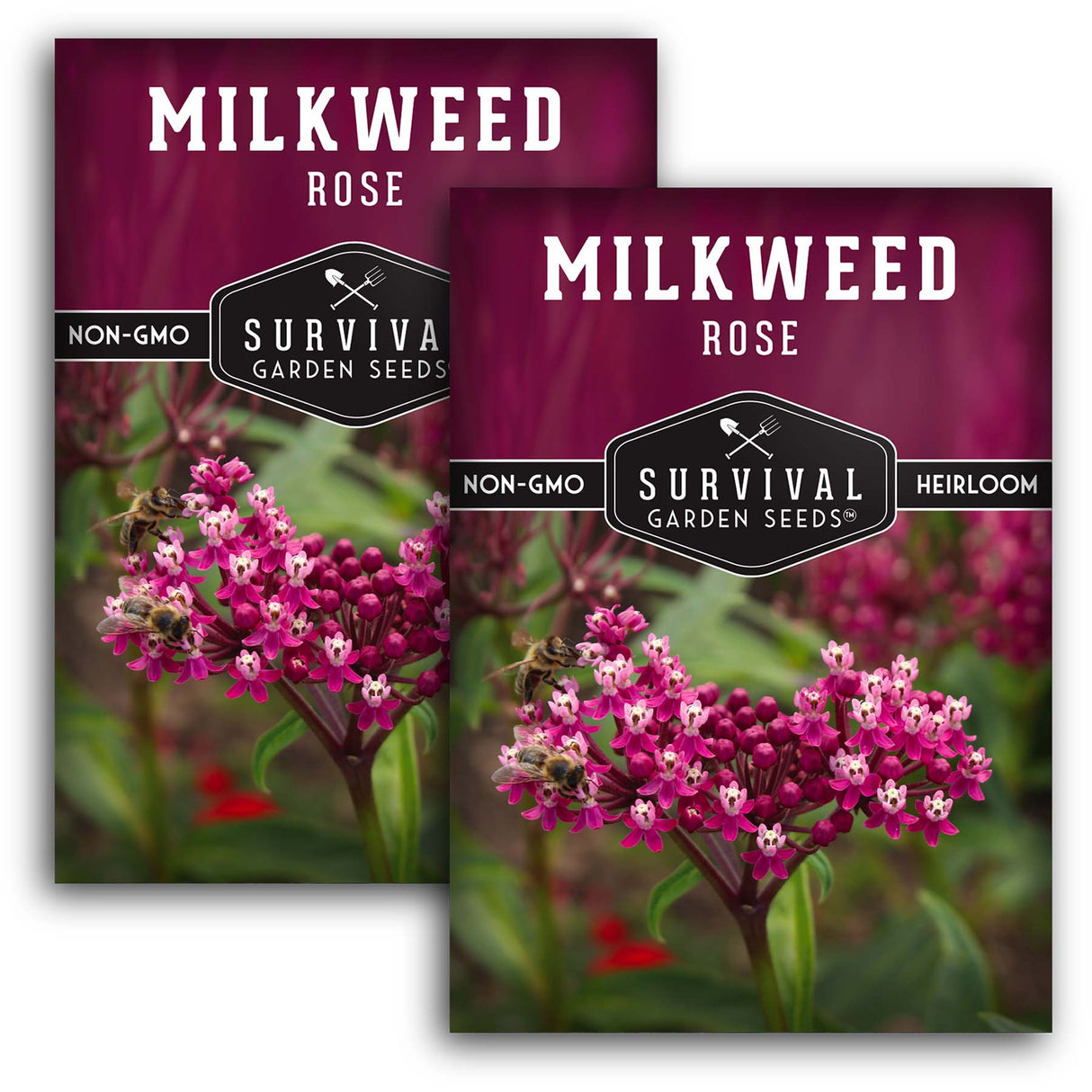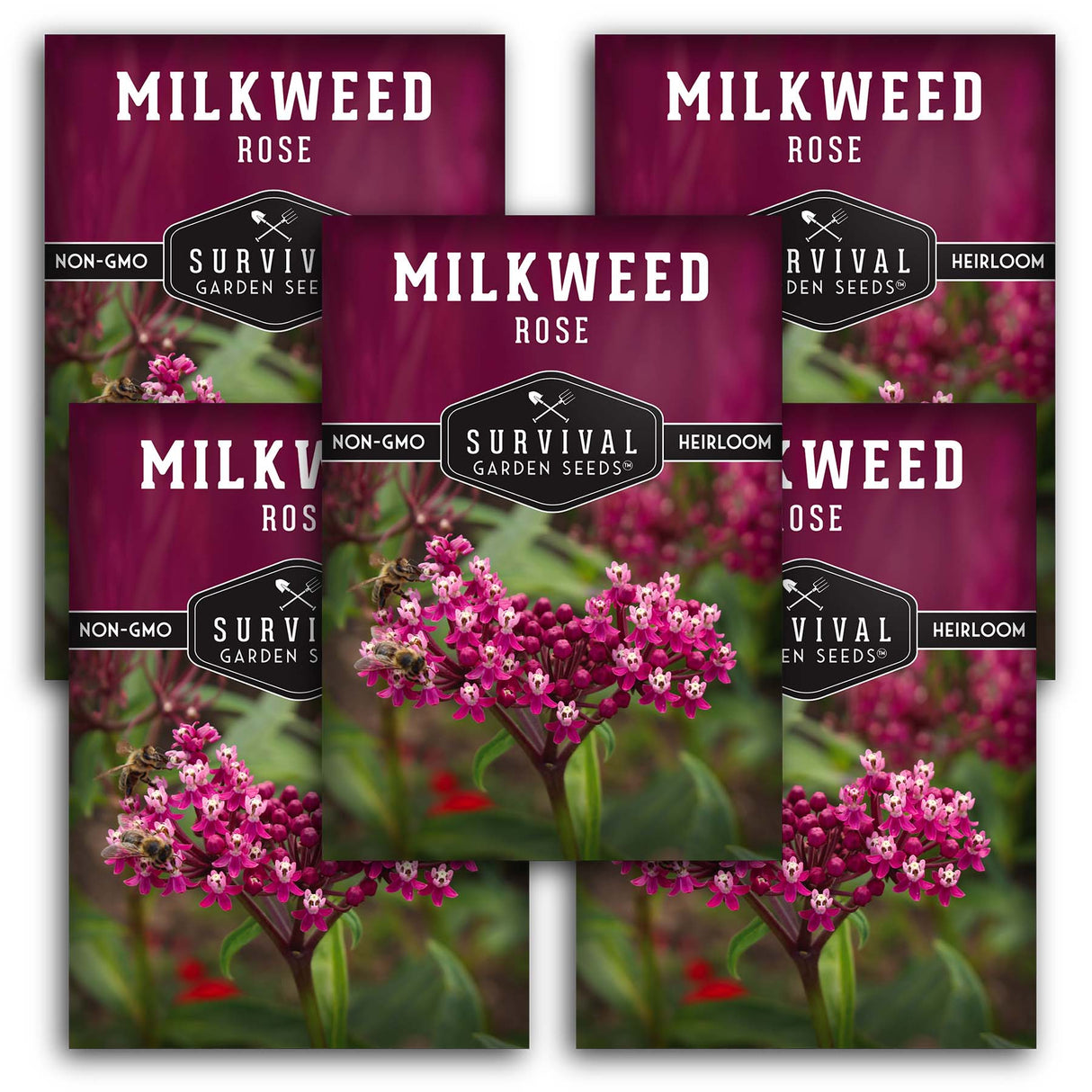Rose Milkweed Seeds
Heirloom - Non-GMO - Reliable Germination
Rose Milkweed Seeds - 1 Packet is backordered and will ship as soon as it is back in stock.
Couldn't load pickup availability
Rose Milkweed, also known as Swamp Milkweed, is a perennial herb that grows 24-40” tall. It has smooth narrow leaves and clusters of dusty rose to purple star-shaped flowers. This deer and rabbit resistant flower plays a major role in the life of monarch butterflies. It provides pollen, nectar, and habitat for this beautiful orange butterfly, as well as its caterpillars (larvae). If you have a passion for conservation, plant a collection of milkweeds and other wildflowers to help rescue the threatened butterfly population as well as those of other pollinator species like bees and hummingbirds.
- Swamp Milkweed - Also known as rose milkweed, red milkweed, or marsh milkweed, Asclepias incarnata is a perennial wildflower with a native range over most of North America. Its flowers are a beautiful dusky pink color, with small star-shaped blooms growing in clusters. These bushes thrive in wetlands and moist outdoor conditions and will not spread as much as common milkweed.
- Attract Monarchs - Milkweed is vital to monarch butterflies and caterpillars as food, a place to live, lay eggs, and navigate by. Bee, hummingbirds, and other wild pollinator species also will visit this bush. Help with insect conservation by adding milkweeds to your wildflower mix.
- Cold Stratify for Better Germination - For best results, recreate winter conditions to prime the seeds for planting. For indoor seed starting, sprinkle seeds into a damp paper towel, roll up, and store in the refrigerator for 2-3 weeks, then sow as usual. Stratification encourages seeds to sprout, giving you more young seedlings to become healthy plants.
Net Wt. 400MG
Heirloom Flower Seeds
All of our seeds are open-pollinated, non-GMO, heirloom varieties with tested germination rates
Specifications
Specifications
-
Botanical Name
-
Seasonality
-
Planting Zones
-
Light
-
Soil Temp for Germination
-
Germination Time
-
Planting Depth
-
Plant Size
-
Days to Bloom
-
Growing Instructions
-
Seed Saving Instructions
-
Seed Count (approximate)
Payment & Security
Your payment information is processed securely. We do not store credit card details nor have access to your credit card information.
Why Choose Survival Garden Seeds
At Survival Garden Seeds, we believe in preparing today for tomorrow’s peace of mind. That’s why we offer only heirloom, non-GMO, and untreated seeds you can trust to nourish your family and support a sustainable lifestyle. As a family-owned American company, we’re committed to providing seeds that grow strong and true—helping you cultivate health, resilience, and beauty in your garden.

Print Your Own Gift Tags & Envelopes
Spruce up your seed gift with free downloadable print-your-own gift tags & envelopes.
Frequently Asked Questions
Are your seeds heirloom and open-pollinated?
Are your seeds heirloom and open-pollinated?
Yes. All of our seeds are heirloom, open-pollinated varieties, which means they can produce seeds that grow true to type and are suitable for seed saving.
You can learn more about open-pollinated, heirloom, and non-GMO seeds in our Survival Garden Training blog.
Are your seeds non-GMO?
Are your seeds non-GMO?
Yes. All Survival Garden Seeds are 100% non-GMO. Our seeds are open-pollinated heirloom varieties and are never genetically modified.
Are your seeds treated with chemicals?
Are your seeds treated with chemicals?
No. Our seeds are completely untreated and free from chemical coatings, fungicides, or synthetic treatments.
How do I know my seeds are fresh?
How do I know my seeds are fresh?
Every seed packet includes a packed-for date, and we germination-test each seed lot before packaging to ensure high viability.
What is the shelf life of these gardening seeds?
What is the shelf life of these gardening seeds?
Most seeds remain viable for 3 to 5 years or longer when stored properly in a cool, dry place away from light and moisture.
In what USDA hardiness zones can I grow your seeds?
In what USDA hardiness zones can I grow your seeds?
Our varieties are selected to grow successfully across USDA Hardiness Zones 3 through 10. Each packet includes variety-specific planting guidance and germination tips.






















